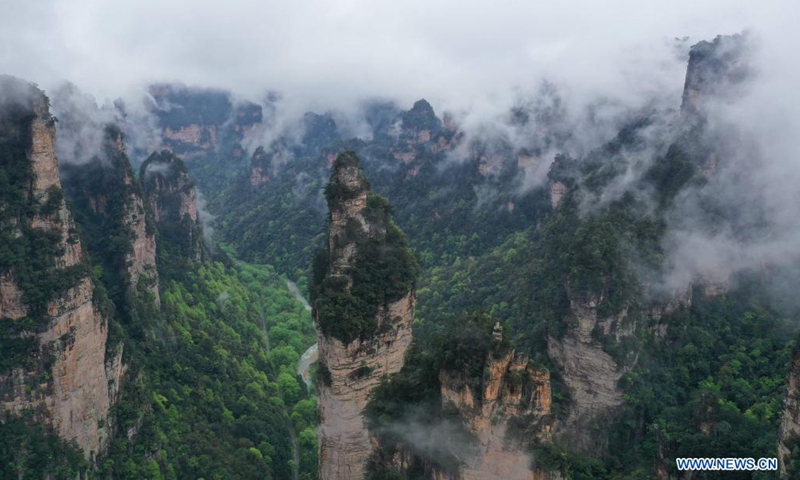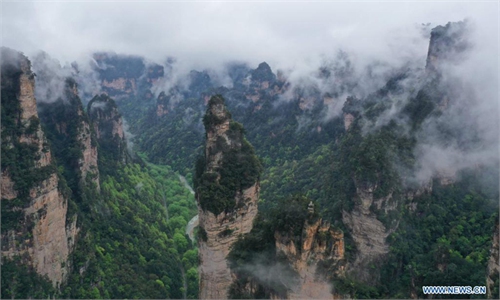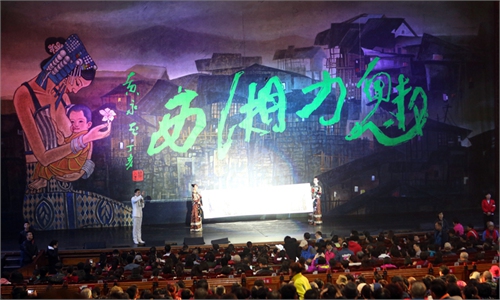
Aerial photo taken on April 7, 2021 shows the mountains shrouded by cloud and mist in Zhangjiajie National Forest Park, central China's Hunan Province.(Photo: Xinhua)
All scenic spots in Zhangjiajie, a popular tourist destination in Central China's Hunan Province, have been closed on Friday morning to curb the virus spreading.
The announcement was released by the local tourist office in Hunan, saying that all scenic spots in the city will be temporarily closed from 8 am on Friday.
Local disease control and prevention center stated on Thursday that tourists have been requested to not visit the city for the time being in order to reduce the risk of spreading the virus.
Representatives from the national forest park of Zhangjiajie told the Global Times on Friday that the park has been closed.
Official data showed that there were 754 tour groups in Zhangjiajie, a total of 11,900 people as of Thursday night, and local government has begun to arrange transportation of tourists to return home.
Zhangjiajie on Friday imposed strict citywide lockdown measures on all residential communities, and entertainment venues were all closed.
Emperor Qinshihuang's Mausoleum Site Museum in Xi'an, Shaanx Province, where the Terracotta Warriors are located, said it suspends operations from Fri noon to curb COVID-19's spread, following the same move by tourist attraction Zhangjiajie.
Zhangjiajie has begun a massive nucleic acid testing program in three regions on Wednesday, said Wang Jianghua, director of the municipal health commission, at a press briefing Thursday evening.
As of 6 pm Thursday, over 226,000 people had samples taken from them, and more than 120,200 tests had been completed, with one positive result, added Wang.
Zhangjiajie reported one infection on Thursday. On Friday, there are 11 districts in Zhangjiajie classified as being of moderate risk .
Over the past days, several Chinese cities reported a spike in COVID-19 infections, with many cases linked to Zhangjiajie. As of Thursday, the number of Zhangjiajie-related infections across China has amounted to at least 18.
Media reported that over 2,000 people watched a performance on July 22 with no space in between the audience members while sitting next to each other. Although the audience was required to wear masks when they entered the theater, staffers could not ensure all audience members wore their masks throughout the entire performance.



